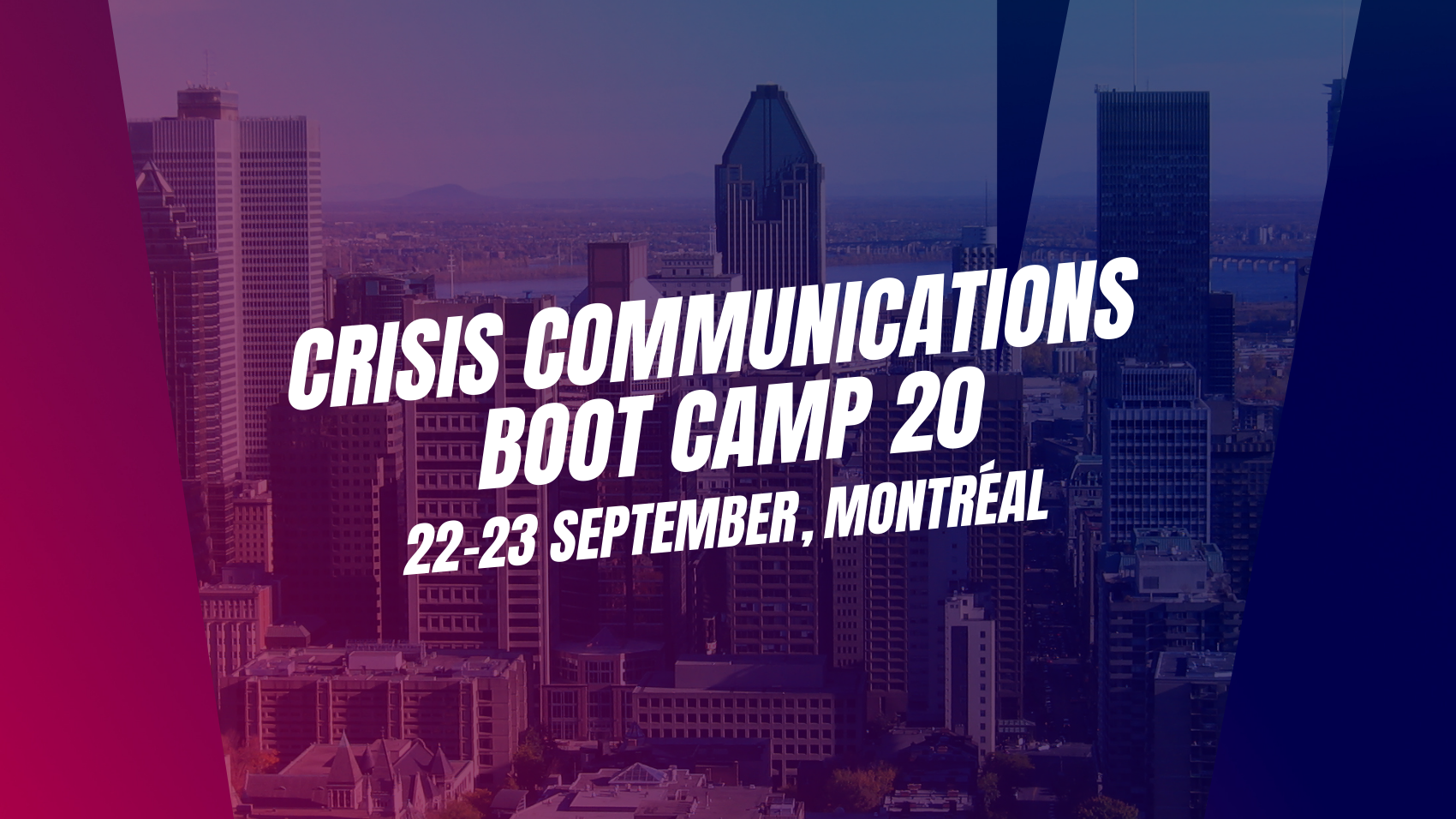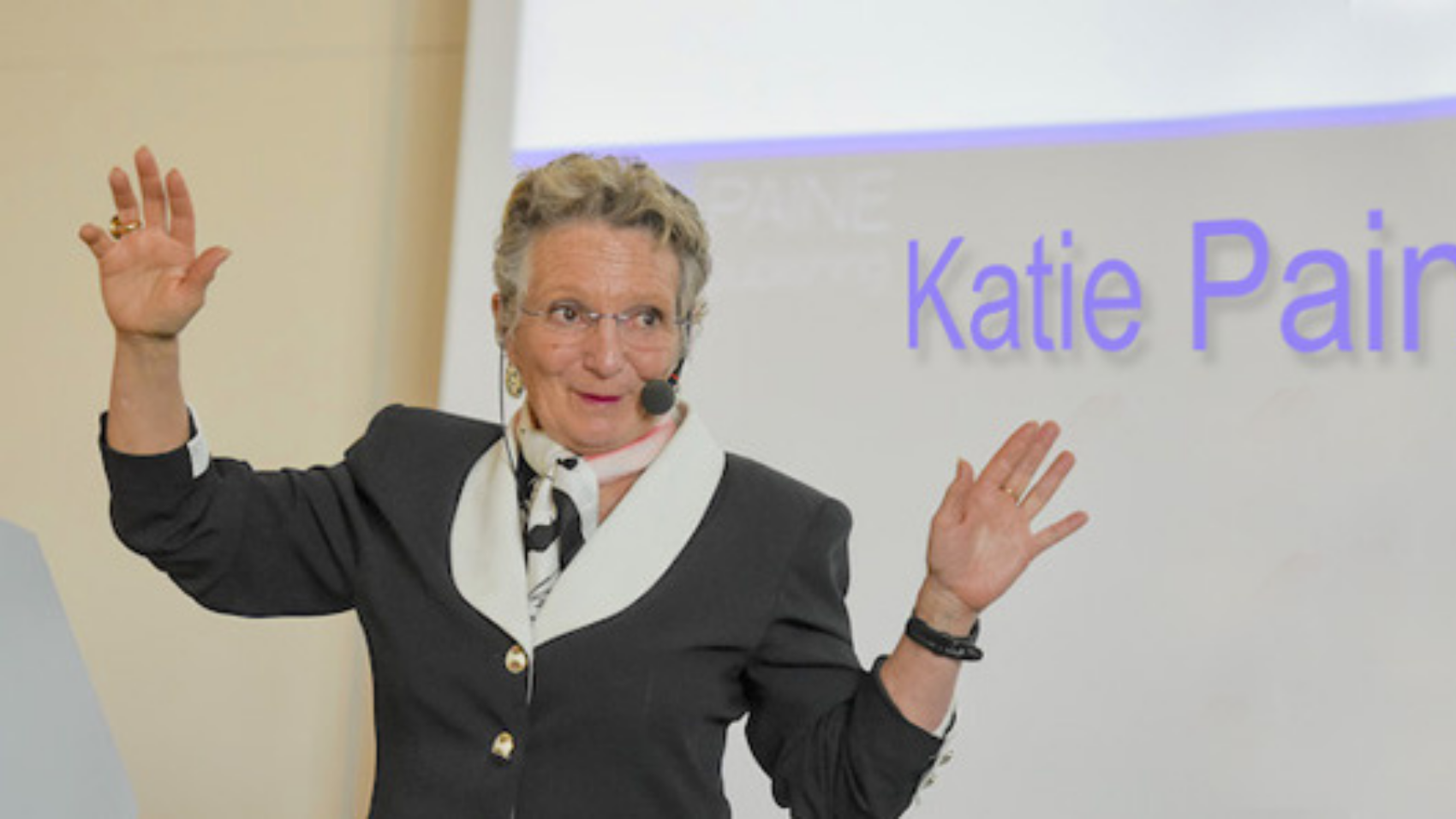 March 31, 2022
March 31, 2022

Crisis Measurement for the Crisis You Avoided by Katie D. Paine
May 09, 2022
On June 23rd, we will be hosting, a one-day, exclusive Masterclass on crisis communications measurement with the one and only Katie D. Paine, also known as the PR Measurement Queen.
Secure your place here and SAVE US$100 off the final ticket price.
This exclusive masterclass will cover the basic steps to best-in-class measurement for any and all forms of communications, how to avoid the misinformation plague (hint: dump your engagement metrics), setting measurable objectives for crisis and issues communications and how to ensure you have the right data for your objectives. The Masterclass will also include a session on measuring the crisis you avoided. Read below what the PR Measurement Queen has to say about it.
--------------
We’ve all been there: The reporter calls and says they’re working on the one story you dread the most.
For me, it was the local editor of Business Week. He called one day and told me he was preparing “The Jim M.-is-an-asshole story.” Jim was my boss, he had a notorious temper, and he absolutely was an asshole.
I’d already kept so many similar stories out of the news, and I knew that this time there was no way I was going to kill or ameliorate it. The truth had to come out sooner or later.
I had been doing my job—and quite well, thank you. But keeping bad news out of the press is not something you can readily express in charts for the quarterly report. And none of my heretofore heroic efforts were going to make up for the one story we all dreaded.
So, I managed to get the reporter to wait a few days. I knew I’d be fired as soon as it ran, so I turned in my notice, and sure enough the story ran the next week.
So when someone (and it happens in almost every speech) asks me “How do you measure what didn’t happen?” I hear their pain.
It’s the PR version of the Schrodinger’s Cat thought experiment concerning the possibility that a cat in a box with a radioactive substance could be both alive and dead at the same time. That puzzle gets at the heart of quantum physics, and a lot of people have argued over it for a long time.
For us in the PR profession, the cat’s parallel is crisis management. The mission of many PR pros is to ensure that any threatened crisis doesn’t become an actual crisis. So in essence they manage situations in which a crisis both exists and doesn’t exist at the same time. Whoa!
I figure if physics can figure out an answer for that cat, we should be able to figure out how to measure those cat-astrophes that, well, didn’t happen. So, just how does crisis measurement work when the crisis was avoided? Let us count a few ways:
1. Measure consistently and continuously to determine when things are bad or good.
If you have a robust media (traditional and social) monitoring system set up, particularly one that uses a quality score, you’ll have a baseline to judge if the news is taking a turn for the worse. The key here is to have baselines and benchmarks set up so you know if things are trending down.
Many automated monitoring systems today enable you to set alerts that warn you if more than a pre-defined number of negative mentions appear in a set timeframe. Those boundary conditions are established using machine learning, based on your prior media coverage. In this way you’ll know when to get nervous. Therefore, one of the major crisis measurement metrics will be: no alerts going off—or, if you are particularly crisis prone, a reduction in the number of alerts per week.
2. Compare your current crisis measurement results against those for past crises.
If you or any of your peers have suffered through other crises in recent years, you have a built-in baseline against which to measure your success. Find a similar scenario to the fire you’re in the process of trying to put out (particularly if it predates your arrival on the scene) and see what the consequences were:
How long did the crisis last?
How much of the coverage was negative?
How much traction did the negative messages get?
Now compare that against the media fallout from the current crisis you’re managing. Does it contain more or fewer key messages? Is your quality score better or worse? Is the ratio between negative and positive coverage better or worse? If you are currently doing better than in the past, then you’ve earned your official hero’s cape!
3. Show that you are doing better than the competition.
In today’s society the chances of avoiding all crises are slim to none. There’s very little stopping your competitors from hiring a troll farm on the other side of the world to spread nasty rumors designed to blacken your reputation. The good news is that you’re not alone. Pretty much everyone else in your industry or market segment is subject to the same risks. The bad news is that the way the media works today, if one company in your industry comes under fire, chances are you’ll all be caught up in it.
So check to see if you’re getting less of the bad stuff than your peers. Think about it this way: If you have four major competitors and all are working equally hard to keep bad stuff out of the news and get good stuff into the news, then each company would theoretically receive 20% (i.e., one-fifth) of all the bad stuff and 20% of the good stuff. So anytime you get less than 20% of the undesirable coverage, you’re ahead of the competition.
4. Make sure that your “nightmare” really is one: measure the outcome, not the media.
As in all communications efforts, you need to keep the end goal in mind. So when you are threatened with or in the middle of what you believe is a crisis, take a deep breath and analyze the consequences. Many major organizations categorize crises before they decide how to respond:
Is it a media crisis? If so it will dominate a news cycle or possibly trend on Twitter. But it probably won’t last more than about 24 hours.
Is it an organizational crisis? If so, to what degree will it disrupt the function of the organization and/or the customers, and for how long?
Is it a reputational crisis? Will it inflict long term damage on the brand and/or the stock price?
For several non-profits I’ve worked for, what appeared at first to be a disastrous story turned out to actually generate donations and/or engagement.
The NWF’s “disaster.” A number of years ago the PR guy at the National Wildlife Federation asked me how I would measure a disaster. So I asked him to describe a typical “disaster.” He recounted how, in support of NWF’s push to protect open land for endangered species, he had worked for weeks to arrange for a water buffalo to appear on the Conan O’Brien show. It did not go as planned. The water buffalo threw Conan to the ground, generating a spectacular bruise, which of course he showed off to his audience the next night.
Conan’s technicolor bruise aside, I wasn’t convinced that this was as much of a “disaster” as the NWF thought. As it happened, their digital analytics expert was on hand, so I asked her to pull up their results for the 72 hours following the episode. It turned out that traffic to their website had spiked and generated an unexpected uptick in donations and subscriptions. What they had assumed was a disaster was actually a success.
PBS’s “negative” coverage. I spotted a similar occurrence recently with another client. Their one negative mention in an otherwise wildly successful month was this clip from Jimmy Kimmel Live, making fun of PBS’ The Great American Read survey. I checked PBS’s digital analytics and found that immediately following that “negative” piece they saw a 22% spike in new unique visitors. Again, what first seemed to be failure was a surprisingly good result.
5. It’s only a crisis if your stakeholders think it is: measure what they think, not what you think.
A crisis is a crisis if and only if it negatively impacts your key stakeholders. I’ve provided evidence in court trials in which a company claimed defamation but our crisis measurement research showed that almost no one was aware of the crisis. And if they were, then they couldn’t name the company responsible.
A well-known case occurred during one of the Olympic Games, when IBM’s sponsorship included providing all the IT and networks for the event. On opening day everything but the media center was up and running. Naturally the media had a field day slamming IBM for its “failure.” In the meantime IBM did what any smart company would do: it conducted an overnight poll of its customers and target audience. The response was “We’re really impressed that IBM could get something that complex up and running that quickly.” So: no stakeholder problem, no crisis. ∞
About Katie D. Paine:
Katie Delahaye Paine, aka The Measurement Queen (@queenofmetrics), has been a pioneer in the field of measurement for more than three decades. She was recently awarded the prestigious IPR Jack Felton Medal for Lifetime Achievement, an award given for lifetime contributions in the advancement of research, measurement and evaluation in public relations and corporate communication. She founded two measurement companies, KDPaine & Partners Inc. and The Delahaye Group.
Her books, Measure What Matters (Wiley, March 2011) and Measuring Public Relationships (KDPaine & Partners, 2007) are considered must-reads for anyone tasked with measuring public relations and social media. Her latest book, written with Beth Kanter, Measuring the Networked Nonprofit:Using Data to Change the World, is the 2013 winner of the Terry McAdam Book Award.
Her latest company, Paine Publishing is the first educational publishing firm entirely dedicated to communications measurement. Its newsletter, The Measurement Advisor, is the industry’s most comprehensive source of information about best practices in communications measurement. In her consulting practices, she designs measurement dashboards for some of today’s most admired companies.
Katie has also been a leading promoter of standards in the PR and social media measurement field, most recently as the initial organizer of The Conclave that released social media measurement standards in 2013. Katie is a Senior Fellow of the Marketing & Communications Center at The Conference Board and a founder and member of the Institute for Public Relations Measurement Commission.